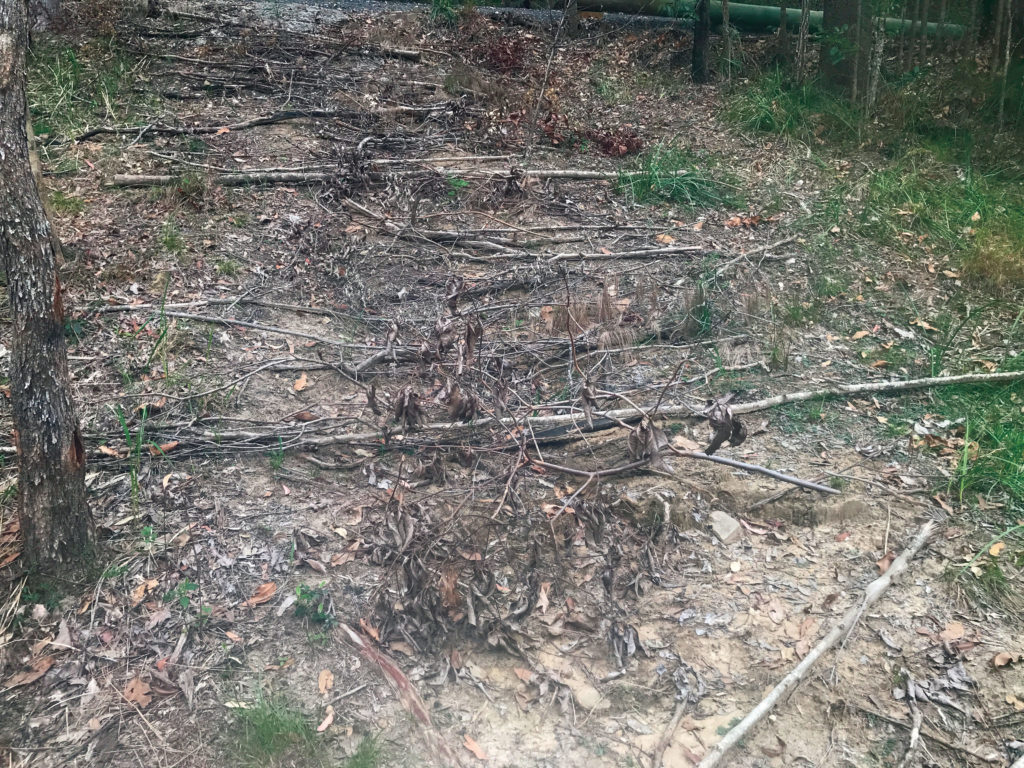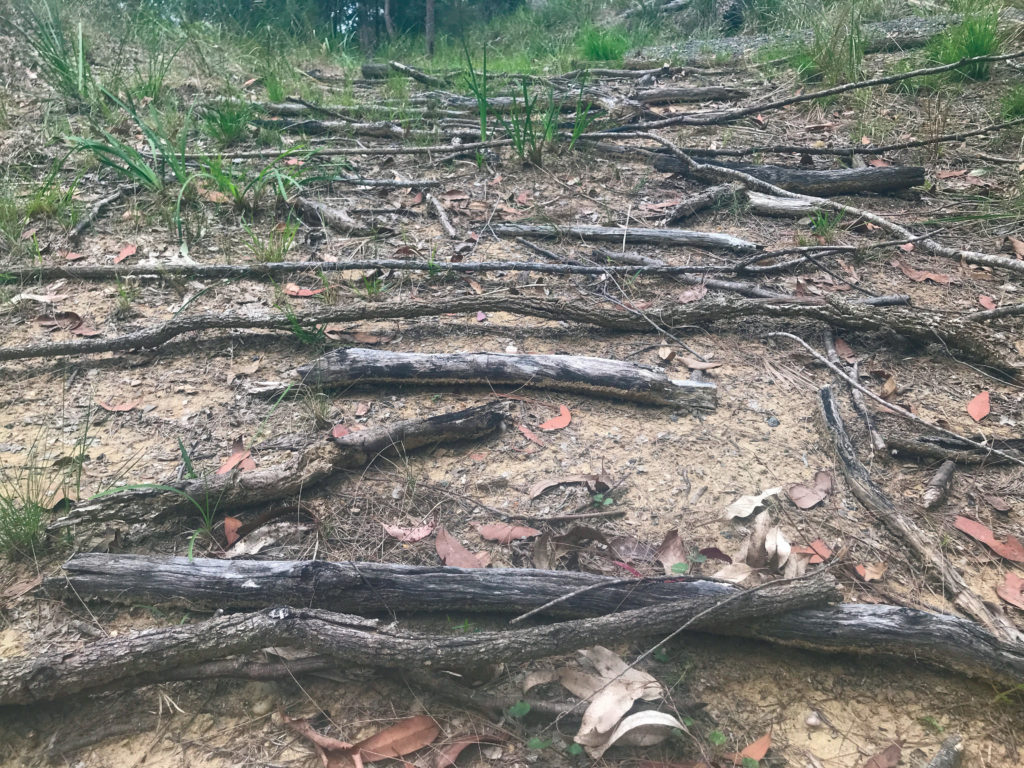Brush-matting is a land rehabilitation and erosion control technique that doesn’t require any specialist skills or materials and offers landholders a cost-effective option for addressing the early stages of erosion.
Simply put, brush-matting involves covering a bare area with woody plant material by laying it over the ground as a soil protection layer. It is suited to rehabilitating small degraded areas that have been disturbed (usually by machinery) to the point where all vegetation cover has been removed such as scalded or bald areas. It can be used on the very early stages of gully erosion or small areas of sheet erosion.
 On Land for Wildlife properties its applications could be for repairing bare and degraded areas such as old motor-cross tracks, eroded horse trails or old logging tracks that are no longer required. It’s also suitable for any redundant steep vehicle tracks that have become washed out and where replanting isn’t practical due to the level of compaction and the absence of top soil. It is also suited to areas where access issues make it difficult to get revegetation materials such as water and other materials to the site. Brush-matting offers a cheap alternative to help prevent erosion and re-establish vegetation cover without the need for planting or purchasing specialist erosion control materials.
On Land for Wildlife properties its applications could be for repairing bare and degraded areas such as old motor-cross tracks, eroded horse trails or old logging tracks that are no longer required. It’s also suitable for any redundant steep vehicle tracks that have become washed out and where replanting isn’t practical due to the level of compaction and the absence of top soil. It is also suited to areas where access issues make it difficult to get revegetation materials such as water and other materials to the site. Brush-matting offers a cheap alternative to help prevent erosion and re-establish vegetation cover without the need for planting or purchasing specialist erosion control materials.
Brush-matting is a technique that has long been employed in the rehabilitation of sand mines and eroded sand dunes. In these areas it generally involves using harvested branches that are carrying fertile materials (seeds). However in my experience, just the simple act of covering up bare earth with deadfall branches and/or harvested branches will gradually create conditions conducive for natural regeneration processes to recommence and for native plant cover to re-establish.
Suitable brush-matting materials can usually be sourced adjacent to the area to be covered. This can include dead fall branches, logs, tree limbs, sticks, bark and foliage. Obviously deadfall that provides existing habitat values such as hollow logs should not be disturbed. Brush materials can either be placed in one go or could be gradually accumulated by progressively relocating recently fallen branches from tracks and adjacent areas. You could also use pruned branches that are overhanging tracks. Native grasses can be cut when in seed and also spread over the woody debris in order to introduce seed.

The branches and attached foliage help shade the ground providing some of the benefits offered by mulching such as maintaining soil moisture. However, initially the coverage should not be too thick as it will suppress seed germination. Locally sourced materials can also inadvertently introduce beneficial fungi spores, invertebrates and micro-organisms to the site and help reinstate some ecological processes that assist in improving soil conditions to a state that will again facilitate germination of native plants. Once instated, the messy pile of branches also diverts any heavy traffic giving the area a spell from compaction. While at the same time offering some cover for smaller fauna such as skinks.
Similar to the leaky weir concept, branches and bramble should be laid across the slope as this will actively intercept and slow overland water flow, aid infiltration and allow sediment and leaf-litter to settle and accumulate. As organic matter accumulates and covers the bare area, decomposition processes will also recommence and ultimately a humus layer is established. Trapped within the sediment and washed organic material are seeds, some will be native and some may be exotic species such as grasses or annual herbs. As the conditions improve some of these seeds will germinate and the roots of these pioneer plants will help to stabilise and retain the recent deposition of sediments. In the absence of any natives, low priority weeds could be left in the short to medium term to help halt erosion.
Brush-matting is an under-utilised technique that is affordable and achievable for the majority of landholders. Applied in the right situation it can be a great low-input alternative to planting. If you have a bare area on your property, it’s worth considering brush-matting as an option for re-establishing vegetation cover.
Article and photos by Nick Clancy
Land for Wildlife Officer
Sunshine Coast Council
